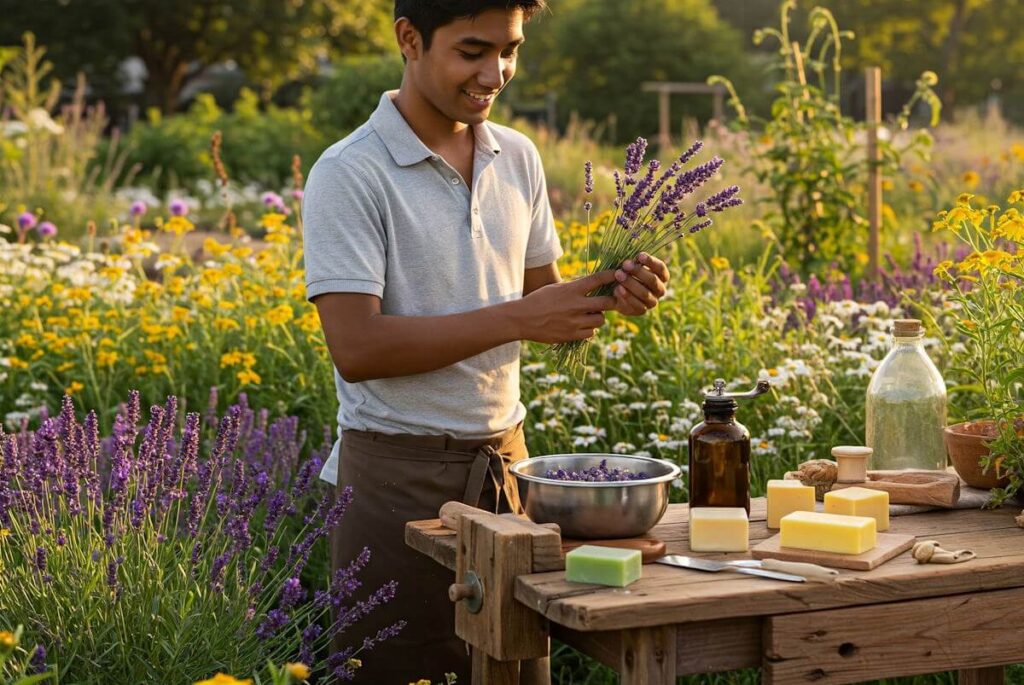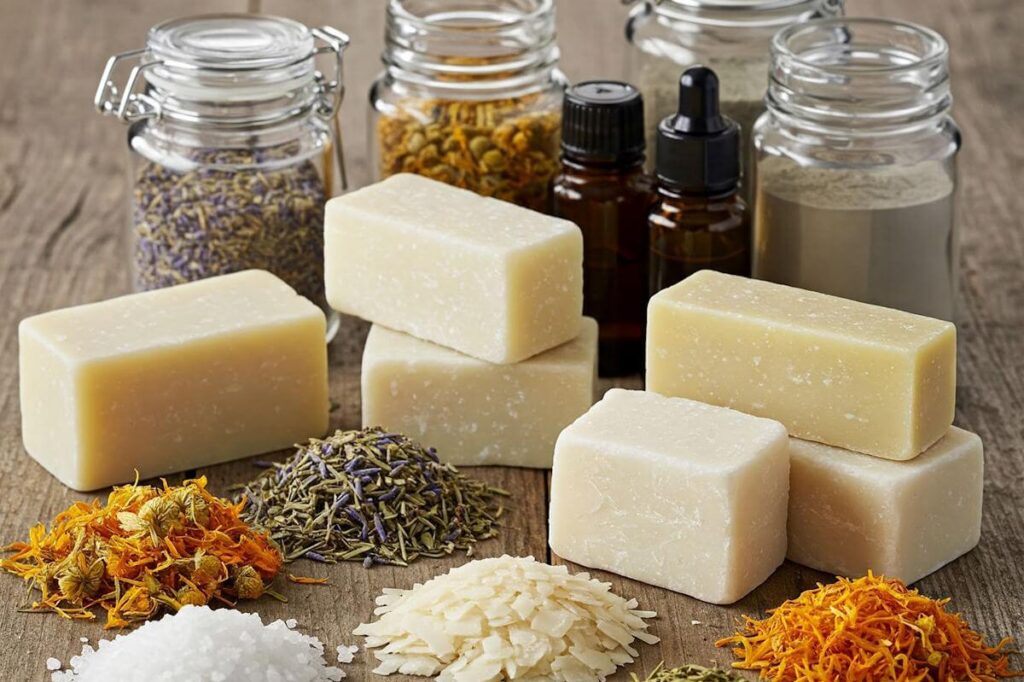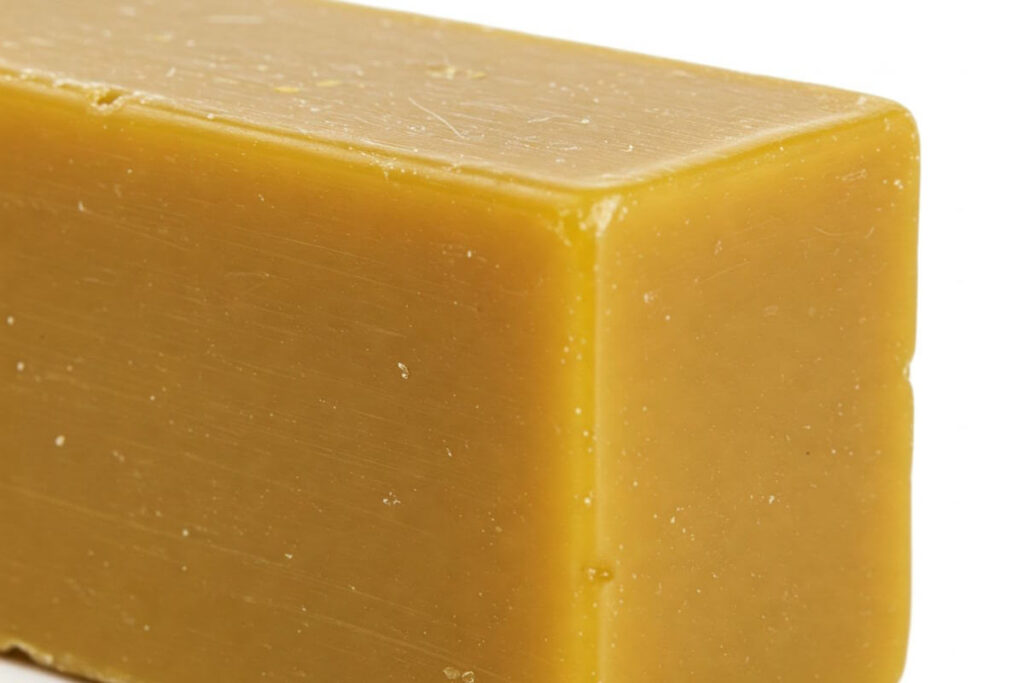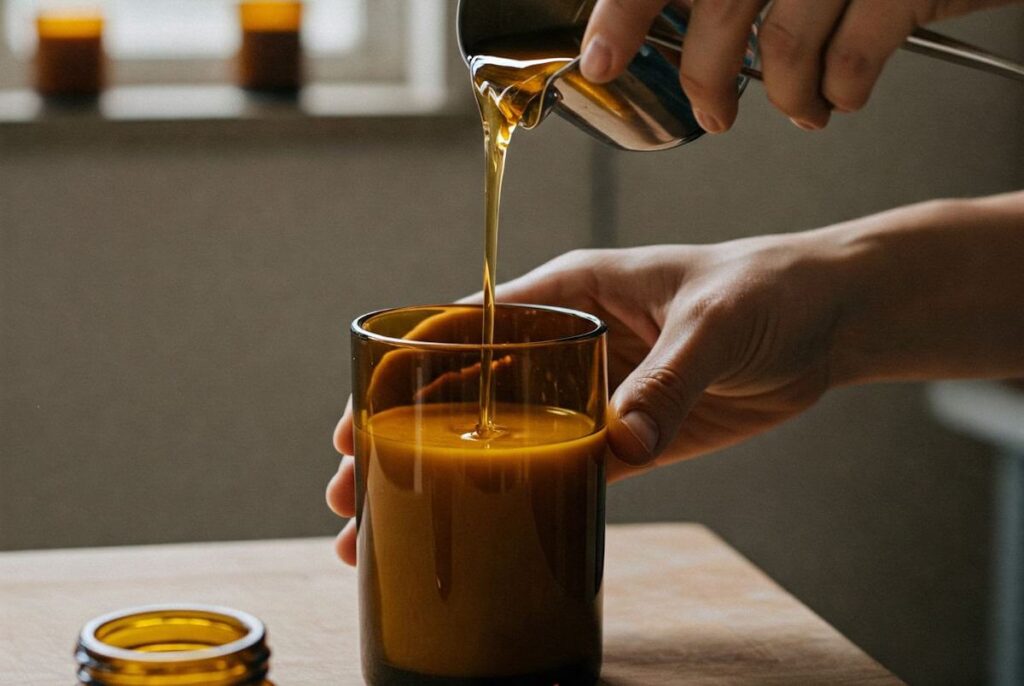Eco-friendly soap making represents a significant shift in the craft of soap production, where the focus lies on sustainability and minimizing environmental impact. In recent years, there has been a notable increase in demand for green products as consumers become more aware of the consequences of their choices on the planet. As a result, many crafters are now embracing eco-friendly practices, aligning their creative processes with ecological values.
The significance of eco-friendly soap making extends beyond mere aesthetics; it connects artisans with a broader movement towards sustainability. This approach aims to utilize natural ingredients sourced responsibly, thereby reducing the reliance on synthetic chemicals that can be harmful to the environment. By opting for organic oils, plant-based colorants, and biodegradable packaging, soap makers are pioneering a movement that supports not only their craft but also the health of the ecosystem.
Furthermore, engaging in eco-friendly soap making can enhance a crafter’s appeal to an increasingly conscientious customer base. Eco-conscious consumers are actively seeking products that align with their values of environmental stewardship. By integrating sustainable practices into their soap-making processes, artisans can cater to this growing demographic, fostering loyalty and repeat business while contributing positively to the planet.
As more individuals are drawn to craft soap making, the potential for adopting eco-friendly techniques has broadened. Whether one is new to the craft or an experienced soap maker, there are numerous ways to approach the process sustainably. From selecting local ingredients to implementing energy-efficient methods, the journey towards eco-friendly soap making is both rewarding and impactful. Ultimately, it empowers crafters to not only create high-quality products but also play a pivotal role in promoting environmental awareness and sustainability.
Understanding Sustainable Ingredients
When it comes to eco-friendly soap making, selecting sustainable ingredients is a vital step toward creating products that are not only good for the skin but also kind to the environment. One key component in sustainable soap making is the use of organic oils. These oils, such as olive, coconut, and palm oil, should ideally be certified organic, ensuring they are free from synthetic pesticides and fertilizers. This not only protects the user’s skin but also minimizes harmful impacts on local ecosystems from agricultural runoff.
In addition to organic oils, butters such as shea and cocoa butter are essential for adding moisture and a rich texture to soaps. These plant-based butters typically come from sources that prioritize ethical harvesting practices, ensuring both environmental sustainability and the well-being of local communities. Selecting sustainably sourced butters can significantly enhance the social responsibility of your crafting process.
Natural colorants also play a pivotal role in creating visually appealing soap products. Ingredients such as clays, activated charcoal, and plant-based powders can provide vivid colors without the harmful chemicals found in synthetic dyes. These natural alternatives not only support a sustainable approach but also often offer additional skin benefits, such as detoxifying properties from clays or antioxidants from plant extracts.
It is also crucial to source ingredients from suppliers who adhere to ethical production practices. By supporting local suppliers, crafters can reduce their carbon footprint and foster a more sustainable supply chain. Furthermore, ensure that the products are cruelty-free and not tested on animals, which aligns with the broader values of eco-conscious crafting. In essence, the careful selection of sustainable ingredients in soap making underscores the commitment of crafters to the environment and to ethical consumption.
The Benefits of Cold Process vs. Hot Process Soap Making
Soap making is an age-old craft that can be approached through various methods, the two most prominent being cold process and hot process. Each method presents unique characteristics that can significantly impact the environmental footprint of soap production. When considering energy usage, it is essential to recognize that cold process soap making primarily relies on ambient temperatures rather than heat, making it a more energy-efficient choice. In contrast, the hot process method requires sustained heat to accelerate saponification, demanding more energy and resources, which can contribute to a larger environmental impact.
Time consumption is another critical factor. Cold process soap can take several weeks to cure adequately, slowing down the production cycle. However, this extended time allows for a more natural incorporation of ingredients and deeper scents, which many crafters value. On the other hand, hot process soap can be used almost immediately after making, appealing to those seeking a quicker turnaround. While this speed may be advantageous, it can compromise the quality of the soap, as certain delicate ingredients may not fully integrate without the slow saponification process associated with cold processing.
When evaluating waste generation, cold process soap typically allows for a more efficient use of materials; excess oils or lye can be minimized through meticulous measurement. In contrast, hot process can lead to more waste due to the adjustments required in utilizing heat. Therefore, those who prioritize sustainability in their crafting should seriously consider these factors. Ultimately, the cold process method stands out as the more eco-friendly approach, given its lower energy requirements, thoughtful material usage, and its ability to produce high-quality soap that is as gentle on the skin as it is on the planet.
Eco-Friendly Packaging Solutions
In the realm of soap making, the significance of eco-friendly packaging cannot be underestimated. Traditional packaging materials often contribute to environmental waste and pollution, making it crucial for soap crafters to adopt sustainable practices. One effective approach is utilizing biodegradable wraps for finished soaps. These wraps are made from natural materials that break down over time, reducing landfill waste and supporting a circular economy.
Another alternative is the use of reusable containers. Soap makers can consider packaging their products in glass jars or aluminum tins, which can be repurposed by consumers or recycled after use. This not only minimizes waste but also conveys a sense of quality and sustainability, enhancing the overall appeal of the product. Furthermore, these reusable options can create a unique selling proposition, attracting environmentally conscious consumers who prioritize sustainability in their purchasing decisions.
Minimalistic packaging is also a viable solution for eco-friendly soap making. By reducing excess materials, crafters can lower their environmental impact while still providing protection to the product. Utilizing simple paper bands, kraft paper boxes, or compostable pouches can effectively showcase the soap without excessive embellishments that are often not recyclable. This method highlights the product’s natural ingredients while aligning with the values of eco-conscious consumers.
Education plays a vital role in promoting responsible disposal among consumers. Soap makers should include information about how to properly dispose of or recycle packaging materials. Providing guidelines on the environmental benefits of choosing eco-friendly options—such as minimizing carbon footprints and reducing pollution—can foster a sense of responsibility and encourage customers to actively participate in sustainability efforts.
Ultimately, by implementing eco-friendly packaging solutions, soap crafters can significantly contribute to reducing environmental waste while reinforcing their commitment to sustainability, thereby appealing to a growing market of conscientious consumers.
Sustainable Production Practices
Engaging in sustainable production practices is crucial for soap makers who aim to minimize their environmental footprint while creating high-quality products. One significant aspect of this is choosing between batch production and small-scale operations. Batch production often allows for the efficient use of resources and can streamline processes, potentially leading to waste reduction. However, it can sometimes incentivize bulk purchasing of raw materials, which may not always align with sustainable sourcing principles. Small-scale operations, although limited in output, can facilitate more control over ingredient quality, support local suppliers, and promote the use of natural ingredients, thus enhancing the eco-friendliness of the soap-making process.
In addition to production scales, energy efficiency plays a key role in sustainable soap making. Crafters can explore the use of energy-efficient equipment, such as low-energy mixers, or opt for cold process methods that require less heating. Incorporating renewable energy sources, such as solar panels, can further minimize ecological impact while creating soap. By investing in these innovations, soap makers can significantly reduce their energy consumption, leading to a smaller overall carbon footprint.
Effective waste management strategies are also essential in sustainable soap production. Implementing practices such as recycling leftover soap scraps into new batches or utilizing biodegradable packaging can substantially benefit the environment. Educating oneself about local waste disposal options and engaging with community recycling programs can also improve sustainability efforts. By adopting practices that emphasize reduction, reuse, and recycling, soap makers can contribute positively to their communities while preserving the planet’s resources.
These various sustainable production practices ultimately serve to align soap making with environmentally responsible approaches, fostering a culture of sustainability among crafters and consumers alike.
Incorporating Natural Fragrances and Essential Oils
In the realm of soap making, the choice of fragrance plays a pivotal role in determining the appeal and overall quality of the final product. Crafters are increasingly leaning towards natural fragrances and essential oils as an integral part of their formulations. These plant-based scents are typically derived from various sources such as flowers, leaves, and other botanical elements, and they provide an array of benefits that resonate with eco-conscious consumers.
One significant advantage of using natural fragrances in soap making is their reduced environmental impact. Unlike synthetic fragrances, which often contain harmful chemicals, natural options are biodegradable and do not contribute to soil and water pollution. By opting for plant-based scents, soap makers can ensure that their products remain environmentally friendly, aligning with sustainable practices that are becoming increasingly critical in today’s market.
Furthermore, essential oils carry numerous therapeutic properties that extend beyond mere fragrance. Many essential oils possess natural antibacterial, antifungal, and antioxidant properties, which can enhance the soap’s overall benefits to the skin. For instance, tea tree oil is renowned for its antiseptic qualities, while lavender oil is celebrated for its calming effects. The incorporation of these functional fragrances not only complements the sensory experience but also adds tangible health benefits for users, emphasizing the importance of selecting natural over synthetic options.
Additionally, many individuals have become increasingly sensitive or allergic to synthetic fragrances, making the use of natural alternatives not only beneficial for the environment but also for personal health. With a growing demand for transparency in product ingredients, soap makers who embrace natural fragrances can tap into a niche market of consumers seeking safe and eco-friendly products. As more artisans explore the vast array of available natural options, the soap-making community can continue to foster environmentally responsible practices while enhancing wellness through the conscious use of plant-derived scents.
Creating a Sustainable Brand Identity
Developing a sustainable brand identity is crucial for soap makers committed to eco-friendly practices. A well-defined brand not only reflects a business’s values but also resonates with consumers seeking environmentally responsible products. The first step in establishing this identity is to clearly articulate your mission and values. Consider what sustainability means to your brand and how you intend to incorporate these principles into every aspect of your business, from sourcing ingredients to packaging.
One effective branding strategy involves using natural imagery and earthy colors in your logos and marketing materials. By visually representing your commitment to eco-friendliness, you can attract consumers who prioritize environmental consciousness. Additionally, storytelling plays a significant role in brand identity. Share the story behind your soap-making process, emphasizing the sustainable sourcing of your ingredients, and the eco-friendly practices you employ. This narrative will help create an emotional connection with your audience, fostering loyalty and trust.
Marketing your eco-conscious values is another critical aspect of building a sustainable brand. Employ various channels to communicate your commitment to sustainability, such as social media platforms, blogs, and product descriptions. Make sure to highlight how your soap products are cruelty-free, biodegradable, and free from harmful chemicals. Engaging with like-minded consumers through informative content, such as tutorials on eco-friendly living or the benefits of using natural soap, helps reinforce your brand’s identity as a leader in sustainability.
Moreover, consider collaborating with other sustainable brands or local artisans to enhance your presence within the eco-conscious community. This partnership could involve joint marketing campaigns or co-hosted events that celebrate sustainable practices. By actively engaging with other eco-minded businesses, you further solidify your brand’s commitment to being a part of the larger movement towards sustainability.
Community and Collaboration: Building a Sustainable Crafting Network
Creating a sustainable crafting network is essential in the realm of eco-friendly soap making. By connecting with fellow crafters who share a commitment to sustainability, individuals can exchange valuable insights, tips, and resources that enhance their soap-making practices. Community engagement not only enriches the crafting experience but fosters an environment in which collaboration flourishes. Engaging with others in the eco-friendly soap-making community can lead to the sharing of sustainable techniques, innovative ideas, and the use of environmentally conscious materials.
One effective way to build these connections is through local crafting groups. Many cities and towns have established clubs or meetups dedicated to soap making, where artisans can gather to discuss their crafts in person. These gatherings often provide opportunities for hands-on workshops, where experienced crafters teach novices about the intricacies of eco-friendly soap production. Additionally, local groups can organize bulk purchases of sustainable ingredients, which not only reduces costs for individual members but also supports local suppliers who prioritize eco-friendly practices.
In addition to local networks, online platforms play a significant role in connecting crafters across geographical boundaries. Social media platforms, such as Facebook and Instagram, host communities dedicated to eco-friendly soap making. These virtual spaces allow members to showcase their creations, share eco-friendly recipes, and discuss challenges in sourcing sustainable materials. Participating in online forums or crafting blogs can provide an additional layer of knowledge, connecting artisans with experts and enthusiasts alike, regardless of physical location.
Collaboration is another vital component of building a sustainable crafting network. Partnering with other crafters for joint projects, such as creating themed soap collections or participating in local craft fairs, can amplify reach and foster camaraderie. Sharing resources, whether they are ingredients or knowledge, allows artisans to leverage each other’s strengths, ultimately promoting a more sustainable approach to soap making.
Conclusion: The Future of Eco-Friendly Soap Making
As the demand for environmentally conscious products continues to grow, the future of eco-friendly soap making appears promising and full of potential. Crafters are increasingly recognizing the importance of utilizing sustainable practices in their crafting processes, not only for the benefit of the planet but also to meet the preferences of an environmentally aware consumer base. This shift underscores the necessity for soap makers to embrace a mindset of continuous learning and adaptation to emerging eco-friendly techniques and materials.
Incorporating ingredients that are derived from natural sources, such as plant oils, botanical extracts, and essential oils, is just the beginning. The soap making industry must also focus on responsible sourcing methods and sustainable packaging alternatives to minimize their ecological footprint. As more artisans become educated about the impacts of their choices, many are turning to local suppliers and eco-friendly certifications, ensuring that their products are not just beneficial for the skin but also for the environment.
Moreover, the integration of innovative techniques, such as cold process and hot process soap making, allows crafters to create high-quality products that are both gentle on the skin and sustainable. The exploration of methods like upcycling used materials presents an exciting avenue for creativity while promoting waste reduction. Challenges such as sourcing specific sustainable ingredients or adhering to new regulations can motivate soap makers to collaborate, share knowledge, and support one another, fostering a community dedicated to eco-friendly practices.
Ultimately, by committing to ongoing education and mindful practices, soap makers can inspire both their peers and consumers to embrace sustainability. Encouragingly, as the landscape of eco-friendly soap making continues to evolve, it paves the way for a brighter and more sustainable future for crafters and the planet alike.




